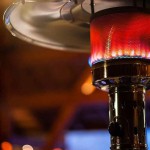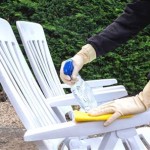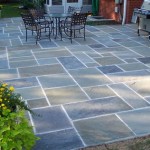Infrared Patio Heater Natural Gas: A Comprehensive Guide
Infrared patio heaters employing natural gas offer a compelling solution for extending the usability of outdoor spaces during cooler seasons. These heaters provide directional warmth, efficiently heating objects and individuals within their range rather than the surrounding air. This characteristic makes them a preferred choice for patios, decks, and other open-air environments. Understanding the functionality, benefits, installation considerations, and safety protocols associated with natural gas infrared heaters is crucial for making an informed purchasing and operational decision.
Unlike traditional convection heaters, which heat the air circulating around them, infrared heaters emit electromagnetic radiation in the infrared spectrum. This radiation directly warms surfaces that absorb it. In the context of patio heating, this significantly enhances the comfort level for those present, as the heat is felt almost instantaneously and is not easily dissipated by wind or drafts. Natural gas, as a fuel source, provides a reliable and often cost-effective option for powering these heaters, especially in areas where natural gas lines are readily available.
Understanding Infrared Heat Transfer
The fundamental principle behind infrared heating lies in the transfer of thermal energy through electromagnetic radiation. This process does not rely on a medium like air to conduct the heat, making it highly efficient in open environments. The infrared radiation emitted by the heater travels in a straight line until it encounters an object, such as a person, furniture, or the patio surface. Upon absorption, the energy of the infrared radiation is converted into kinetic energy, causing the molecules within the object to vibrate more rapidly. This increased molecular motion manifests as heat, resulting in a noticeable increase in temperature.
Different materials exhibit varying degrees of infrared absorption. Darker, matte surfaces tend to absorb infrared radiation more efficiently than lighter, reflective surfaces. This is why the design and placement of patio furniture, as well as the clothing worn by individuals, can influence the effectiveness of the heating system. Careful consideration should be given to optimizing the arrangement of the patio to maximize the absorption of infrared heat.
The intensity of infrared radiation decreases with distance from the heat source, following an inverse square law. This means that doubling the distance from the heater results in a fourfold reduction in heat intensity. Therefore, the placement and power output of the heater must be carefully calibrated to ensure adequate warmth throughout the desired area. Multiple heaters may be required to effectively cover larger patios or outdoor spaces.
Advantages of Natural Gas for Patio Heaters
Natural gas offers several distinct advantages compared to other fuel options, such as propane or electricity, for powering infrared patio heaters. One of the most significant benefits is the ongoing operational cost. Natural gas is often less expensive than propane, particularly in regions where natural gas infrastructure is well-established. This can translate into substantial savings over the lifespan of the heater, especially with frequent use.
Another advantage is the continuous availability of natural gas. Unlike propane, which requires periodic refills of tanks, natural gas is supplied through a fixed pipeline connection. This eliminates the inconvenience and logistical challenges associated with propane tank management, ensuring an uninterrupted supply of fuel for the heater. This also reduces the risk of running out of fuel during an outdoor event or gathering.
From an environmental perspective, natural gas is often touted as a cleaner-burning fuel than propane, although both are fossil fuels. While both release carbon dioxide upon combustion, natural gas generally produces fewer emissions of particulate matter and other pollutants. This can contribute to a more environmentally friendly outdoor heating solution, although the overall impact will depend on factors such as the efficiency of the heater and the frequency of use.
Finally, natural gas heaters generally offer higher BTU (British Thermal Unit) output compared to electric heaters. This translates to a greater heating capacity, making them suitable for larger patios or areas with more exposure to the elements. This higher output allows for more effective heating even on colder days or in windier conditions.
Installation and Safety Considerations
The installation of a natural gas infrared patio heater requires careful planning and adherence to safety regulations. It is highly recommended to engage a qualified professional for the installation process, especially when dealing with gas lines and connections. Improper installation can lead to gas leaks, fire hazards, and other safety risks.
The first step is to assess the availability of a natural gas line at the desired location. If a gas line is not already present, it will need to be installed by a licensed plumber or gas fitter. The gas line should be properly sized to accommodate the heater's gas consumption requirements. It is also crucial to ensure that the gas line is securely connected and leak-tested before the heater is put into operation.
The location of the heater is also a critical safety factor. The heater should be positioned away from flammable materials, such as foliage, curtains, or awnings. Clearances specified by the manufacturer must be strictly adhered to in order to prevent fire hazards. The heater should also be installed in a well-ventilated area to prevent the buildup of carbon monoxide. Carbon monoxide detectors should be installed nearby as an additional safety precaution.
Regular maintenance is essential for ensuring the safe and efficient operation of the heater. This includes inspecting the gas lines for leaks, cleaning the burner components, and checking the reflector for damage. The heater should be shut off and allowed to cool completely before performing any maintenance. Professional servicing should be scheduled periodically to ensure that all components are functioning correctly and to address any potential safety concerns.
The operational use of the heater also requires attention to safety. Always follow the manufacturer's instructions for lighting and operating the heater. Never leave the heater unattended while it is in operation. Be aware of the potential for burns from touching the hot surfaces of the heater. Supervise children and pets closely when the heater is in use. In the event of a gas leak, immediately shut off the gas supply and contact a qualified professional.
Furthermore, local codes and regulations regarding the installation and operation of natural gas appliances should be consulted. These regulations may vary depending on the jurisdiction and may impose additional requirements for safety and compliance. Obtaining the necessary permits and approvals is essential before proceeding with the installation of the heater.
Proper ventilation is another important factor to consider, especially in enclosed or partially enclosed patios. While natural gas heaters are designed to burn cleanly, incomplete combustion can still occur, leading to the production of carbon monoxide. Adequate ventilation helps to dissipate any carbon monoxide that may be produced, reducing the risk of poisoning. Ensure that there is sufficient airflow around the heater and avoid using it in completely enclosed spaces.
The type of ignition system employed by the heater also affects safety and ease of use. Some heaters feature electronic ignition systems, which provide a reliable and convenient way to start the heater. Others may use a pilot light system, which requires manual lighting. Electronic ignition systems are generally considered safer and more convenient, as they eliminate the need for an open flame during the ignition process.
Finally, consider the placement of the heater in relation to prevailing wind conditions. Strong winds can affect the efficiency of the heater and may even cause it to tip over. If the patio is exposed to strong winds, it may be necessary to anchor the heater securely to the ground or a stable structure. Windbreaks or screens can also be used to reduce the impact of wind on the heater's performance.
By carefully considering these installation and safety factors, users can enjoy the benefits of natural gas infrared patio heaters while minimizing the risks associated with their operation. Professional installation, regular maintenance, and adherence to safety guidelines are essential for ensuring a safe and comfortable outdoor heating experience.

Ceiling Patio Heaters Patioheaterusa Com

Sunpak 48 Inch 25 000 Btu Natural Gas Infrared Patio Heater Black S25 B Ng

Natural Gas Patio Heaters Sylvane

Lynx Eave Mounted 48 Patio Heater Ng Woodland Direct

Calcana Patio Heater Ph75ho High Output

The 2 Best Outdoor Patio Heaters Of 2024 Reviews By Wirecutter

Dcs 48 Inch Natural Gas Infrared Patio Heater Stainless Steel Drh 48n
.jpg?strip=all)
Patio Comfort 41 500 Btu Natural Gas Infrared Portable Post Mount Heater Stainless Steel Npc05ss Bbqgrills Com

Rinnai 2150 Se 35 000 Btu Natural Gas Overhead Patio Space Heater In Stainless Steel Rse1s35sn The Home Depot

The 2 Best Outdoor Patio Heaters Of 2024 Reviews By Wirecutter
Related Posts








